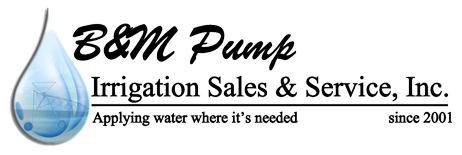Irrigation Strategies for Maximum Corn Growth
If you own a corn field, or are getting ready to plant one, it’s wise to consider your irrigation strategies in Texas. Not only should you be conscious of how much water and fuel cost—and reduce your consumption of both as much as possible—but you’ll want to yield as big a crop as you can. Each year, the United States produces millions of acres of corn. Here are some strategies to make sure your acreage adds to that total.
Understand the relationship between crops, soil and water
Like any plant, corn has specific soil and water needs. For example, your soil needs to be free of any layers that could restrict plant or root growth. It also needs to be able to absorb the water properly—otherwise, you risk wasting the water you’re paying for.
Before you plant your corn, make sure to research how much seasonal water usage you can expect, when to expect to use the most water, whether that amount of water is readily available and how the plant growth and root development affect your water needs.
To understand corn water requirements, you first must understand evapotranspiration. Transpiration is how much water the corn consumes from the roots, which travels through the plant and eventually leaves through the leaf surfaces. Evapotranspiration is the water that is removed from the soil by both transpiration and evaporation on the soil’s surface. Your goal should be to reduce surface evaporation as much as possible.
Naturally, as your plants grow, the demand for water will increase, too. Your water needs may be affected by the environmental conditions, soil fertility and, of course, the available water supply. Generally, you can expect that the warmer the climate and the more mature the plants, the more water you’ll need to keep them alive.
Your water usage might range from 24 to 28 inches per season, depending on these factors. Make sure to consider how much water you’ll use before planting corn—you want to ensure it’s as profitable a crop as possible.
Corn takes about 126 to 140 days to reach maturity, so use those numbers in your decision-making. You may find that, depending on the cost of water, you can’t afford to grow a crop.
Be aware that corn doesn’t uniformly suck up water: it takes about 40 percent from the top quarter inch, 30 from the second quarter, 20 percent from the third quarter and 10 percent from the fourth quarter inch and beyond. This means you’ll want to keep your irrigation primarily relegated to the top two layers of soil, if at all possible.
As the plant and roots grow, they can reach a depth of up to six feet. At that point, you’ll need to reconfigure your irrigation to account for this.
One of the best ways to find out how much water you’ll use (and which irrigation systems are best for your needs) is to talk to someone else about what they prefer.
For help finding an irrigation system in Texas to encourage corn growth, visit B&M Pump Irrigation Sales & Service, Inc. today.
Categorised in: Irrigation
